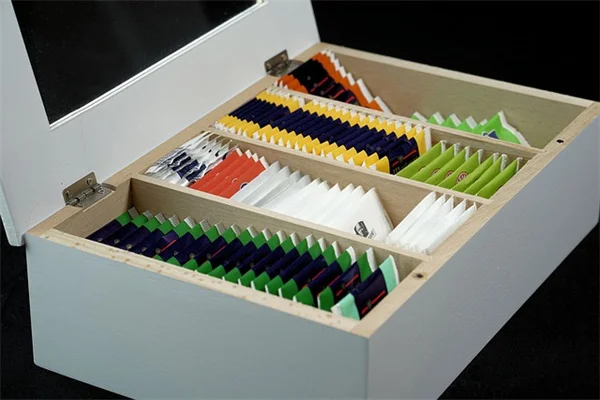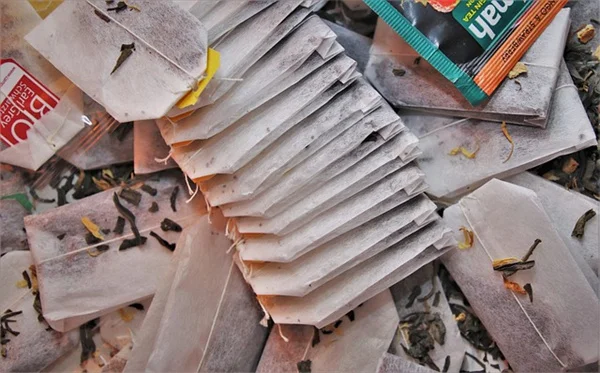How to Clean Epoxy Floor: 7 Essential Tips for a Sparkling Finish
So, you're wondering how to clean epoxy floor? The good news is, it’s easier than you might think! Keeping your epoxy floor clean not only boosts its appearance but also extends its lifespan. You might love that shiny finish, but skipping regular cleanings can lead to scratches and stains that dull that beautiful surface. Think of it this way: just like you wouldn’t neglect your favorite pair of shoes, you shouldn’t neglect your floors! In this guide, I’ll walk you through practical steps and tips to ensure your epoxy floor stays pristine and safe. Let’s dive right in and get your floors looking as good as new! 🧼✨
E.g. :How to Clean Linoleum Floors: 7 Essential Tips for Sparkling Results
- 1、Why Your Epoxy Floor Deserves Some TLC 🧼
- 2、Gear Up Like a Pro 🛠️
- 3、The Step-by-Step Dance of Cleaning 💃
- 4、When Life Gives You Stains... 🍷
- 5、Oops! Don't Do That 🙅♂️
- 6、Making Cleaning a Habit 🗓️
- 7、FAQs
Why Your Epoxy Floor Deserves Some TLC 🧼
It's Not Just About Looking Pretty
Let's be real - who doesn't love walking into a space with that mirror-like epoxy shine? But here's the kicker: keeping your epoxy floor clean does way more than just make your garage or basement look Instagram-worthy. Every time you skip cleaning, you're basically rolling out the red carpet for dirt particles to scratch up that beautiful surface. Think of it like your favorite pair of jeans - the more you take care of them, the longer they'll look awesome.
Want to hear something wild? That oil spot from last week's DIY project isn't just an eyesore - it's actually breaking down your floor's protective layer. Yikes!
Safety First, Always
Here's a question you probably haven't considered: Could your dirty epoxy floor be a lawsuit waiting to happen? Absolutely! When grease and grime build up, they create the perfect slippery surface for accidents. I've seen enough "hold my beer" moments to know that nobody wants to explain to their insurance company why they broke their arm in their own garage.
And get this - in humid areas, that mysterious dark spot in the corner? That's not just dirt - it could be mold throwing a party. Regular cleaning is like being the bouncer that kicks those unwanted guests out before they cause trouble.
Gear Up Like a Pro 🛠️
 Photos provided by pixabay
Photos provided by pixabay
The Dynamic Duo: Broom & Dustpan
You wouldn't go fishing without a rod, right? Well, cleaning epoxy floors without a soft-bristle broom is just as silly. I recommend the kind with rubber-tipped bristles - they're like the massage therapists of cleaning tools, gentle yet effective. Pro tip: sweep in the direction of the floor's texture to really get all those tiny particles.
Fun fact: The average garage collects about 2 pounds of dirt per month just from foot traffic alone. That's like sweeping up a whole bag of flour every 30 days!
Mop Like You Mean It
Here's where most people mess up: using whatever mop they find in the closet. Big mistake. For epoxy floors, you want a microfiber mop - the kind that feels almost velvety to the touch. Why? Because regular string mops can leave behind tiny scratches that add up over time.
Let me break it down with some real numbers:
| Mop Type | Scratch Risk | Water Retention |
|---|---|---|
| Microfiber | Low | High |
| String | Medium | Medium |
| Sponge | High | Low |
See what I mean? Microfiber is clearly the MVP here.
The Step-by-Step Dance of Cleaning 💃
Prep Work Matters
Imagine trying to paint over a dirty wall - that's what mopping without sweeping is like. First, we need to clear the stage. I like to do a quick walkthrough, picking up any obvious debris (looking at you, random screws and bolts). Then comes the broom action - long, smooth strokes from one end to the other.
Here's a joke for you: Why did the broom break up with the vacuum? Because it couldn't handle the attachment issues! (Okay, maybe stick to cleaning...)
 Photos provided by pixabay
Photos provided by pixabay
The Dynamic Duo: Broom & Dustpan
Did you know that using the wrong cleaner can actually make your epoxy floor duller over time? It's true! That's why we swear by pH-neutral cleaners - they're like the Switzerland of cleaning products, perfectly balanced to get the job done without any drama.
Mix about 1/4 cup of cleaner per gallon of warm water - any stronger and you're just wasting product. And please, for the love of shiny floors, don't use that "miracle" cleaner your neighbor swears by unless it's specifically made for epoxy.
When Life Gives You Stains... 🍷
The Oil Stain Tango
Picture this: You just changed your car's oil and - oops! - there's now a dark puddle on your perfect floor. Before you panic, grab some kitty litter. No, seriously! Sprinkle it on, let it soak up the oil overnight, then sweep it up. Follow with a degreaser (epoxy-safe, of course) and that stain will be history.
Why does this work? Kitty litter is basically tiny sponges that love to soak up oily messes. It's like giving your floor a little oil-absorbing hug.
Rust Never Sleeps... But You Can Fight It
Metal tools left damp on epoxy can leave those annoying orange stains. Here's a pro tip: Make a paste with baking soda and water, spread it on the stain, and let it sit for 15 minutes. Gently scrub with a soft brush, then rinse. The baking soda acts like a gentle sandpaper that won't damage your floor.
Remember: Always test any cleaning method in an inconspicuous area first. Because "oops" isn't the look we're going for here.
Oops! Don't Do That 🙅♂️
 Photos provided by pixabay
Photos provided by pixabay
The Dynamic Duo: Broom & Dustpan
I get it - that steel wool pad looks perfect for scrubbing tough stains. Resist the urge! Steel wool is basically tiny knives that will turn your glossy floor into a scratched-up mess faster than you can say "regret." Instead, use a white nylon scrub pad - it's tough on stains but gentle on epoxy.
Fun fact: The scratches from steel wool are actually microscopic grooves that collect dirt, making your floor look dirty again faster. It's like digging your own cleaning grave!
The Pressure Washer Paradox
Here's a question that comes up a lot: "Can't I just power wash my epoxy floor?" Technically yes, but you shouldn't. The high pressure can force water under the epoxy coating, causing bubbles or peeling over time. Stick to good old-fashioned elbow grease - your floor will thank you.
If you absolutely must use a pressure washer, keep it under 1500 PSI and hold the nozzle at least 12 inches from the surface. But really, just grab a mop.
Making Cleaning a Habit 🗓️
The 5-Minute Daily Trick
Want to know my secret to always having clean floors? I spend just five minutes each day doing a quick sweep and spot clean. It's like brushing your teeth - a little regular care prevents major problems later. Keep a small broom and dustpan handy near your epoxy floor area to make this effortless.
Think about it: 5 minutes daily adds up to about 30 hours a year. That's less time than you'll spend watching your favorite show's next season!
Seasonal Deep Cleaning
Every 3-4 months, I block out an hour for a proper deep clean. This is when I move everything out, get into all the corners, and maybe even wax if needed (with epoxy-safe products, obviously). Mark these dates on your calendar like important appointments - because your floor's health is important too.
Pro tip: Do this when the weather's nice so you can let the floor dry completely with doors open. Nothing worse than trying to walk on a damp epoxy floor - it's like an ice skating rink!
Taking care of your epoxy floor is not just a chore; it’s a commitment to keeping your space looking great and safe. We’ve covered how to clean epoxy floor surfaces effectively, from the right tools to use to the importance of daily maintenance. Remember, regular cleaning plays a crucial role in preserving that stunning shine while preventing scratches and potential accidents. So, whether it’s doing a quick sweep each day or committing to a deeper clean every few months, you’re not just maintaining a floor; you’re protecting an investment. By following these steps, you can ensure your epoxy floor stays in tip-top shape for years to come. If you have any tips or experiences of your own, I’d love to hear them! Let’s connect in the comments below or hit me up on social media. Together, we can keep our spaces beautiful and safe! 🏡✨
Additionally, consider looking into other aspects of home maintenance that can complement your cleaning routine. For instance, how about exploring the benefits of using eco-friendly cleaners or understanding the best practices for maintaining other types of flooring in your home? Keeping your living space clean and well-maintained goes beyond just your epoxy floor. I believe that when we invest time in our homes, we create environments that reflect our personalities and lifestyles. So, keep the conversation going, and let’s share our tips and tricks on creating a clean, welcoming home!
E.g. :How To Clean Your Epoxy Floor (General Maintenance) - YouTube
FAQs
How often should I clean my epoxy floor?
It's a great idea to clean your epoxy floor regularly to maintain its shine and durability. I recommend doing a quick sweep and spot clean every day, which only takes about five minutes. This short daily routine prevents dirt buildup and keeps your floor looking fresh. Additionally, every 3-4 months, set aside some time for a deeper clean. This involves moving everything out and getting into those tricky corners. Think of it as a seasonal refresh for your space!
What cleaning products are safe for epoxy floors?
Choosing the right cleaning products is crucial for preserving your epoxy floor's finish. Always opt for pH-neutral cleaners, as they are gentle yet effective. I usually mix about 1/4 cup of cleaner per gallon of warm water. Avoid using harsh chemicals or abrasive cleaners because they can dull the surface over time. Remember, keeping it simple with the right products will make all the difference in how your floor looks and lasts!
Can I use a pressure washer on my epoxy floor?
While it might be tempting to power wash your epoxy floor for a quick clean, it's not the best idea. High pressure can force water underneath the epoxy coating, leading to bubbles and peeling. If you really feel you must use a pressure washer, keep it under 1500 PSI and maintain a distance of at least 12 inches from the surface. However, for most situations, sticking to traditional cleaning methods will yield better results!
What should I do about oil stains on my epoxy floor?
Oil stains can be a real headache, but there’s an easy way to tackle them. If you spill oil, grab some kitty litter and sprinkle it over the stain. Let it sit overnight to absorb the oil, then sweep it up. After that, follow up with an epoxy-safe degreaser to fully eliminate any remaining residue. This method is super effective and saves your beautiful floor from long-term damage!
How can I prevent scratches on my epoxy floor?
Preventing scratches on your epoxy floor is all about using the right tools and being mindful of what you bring into the space. For cleaning, always use a soft-bristle broom with rubber-tipped bristles and a microfiber mop. These tools are gentle yet effective, minimizing the risk of scratching. Additionally, avoid using steel wool or harsh pads that can damage the surface. Taking these simple precautions will help keep your floor looking pristine for years to come!


